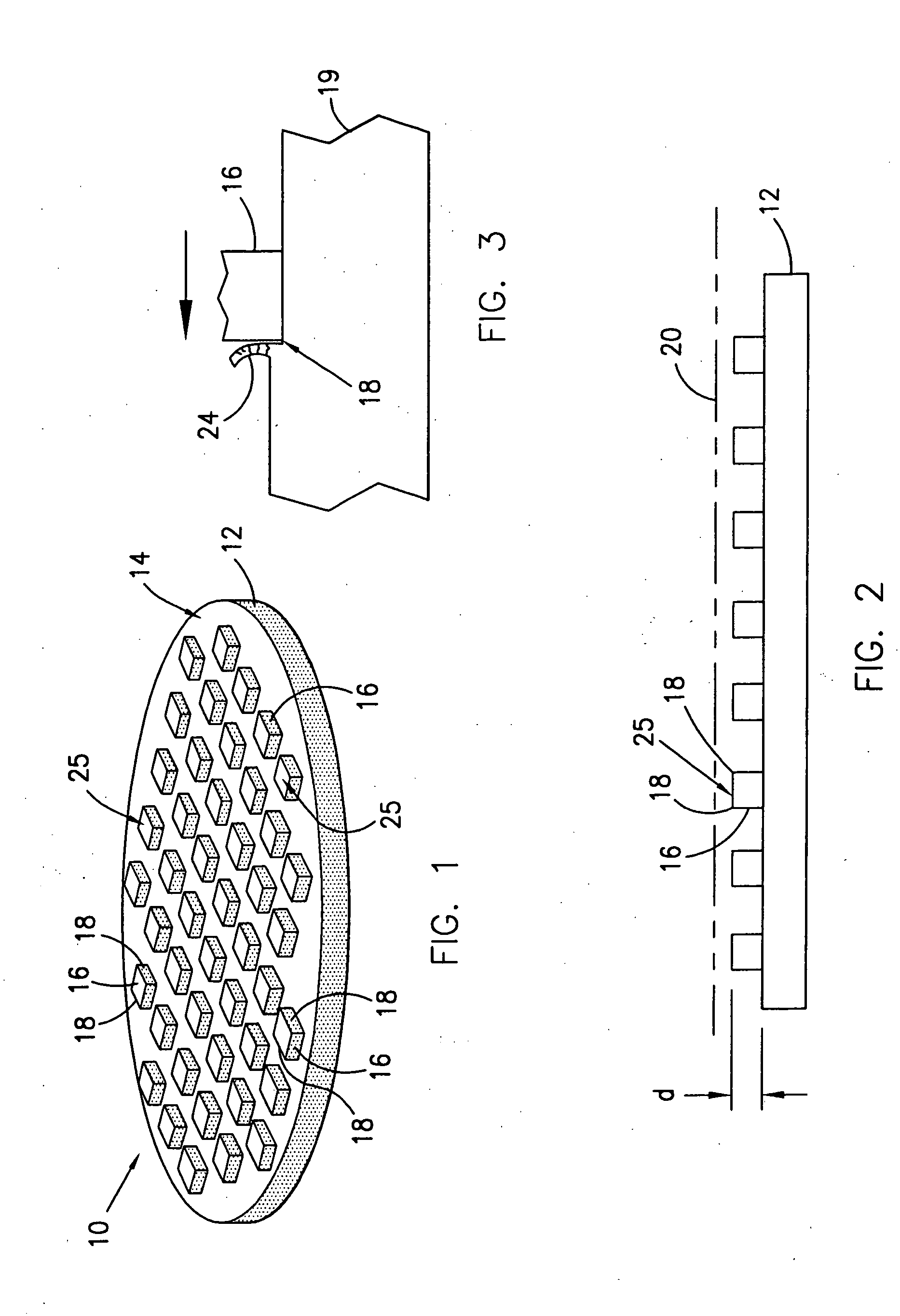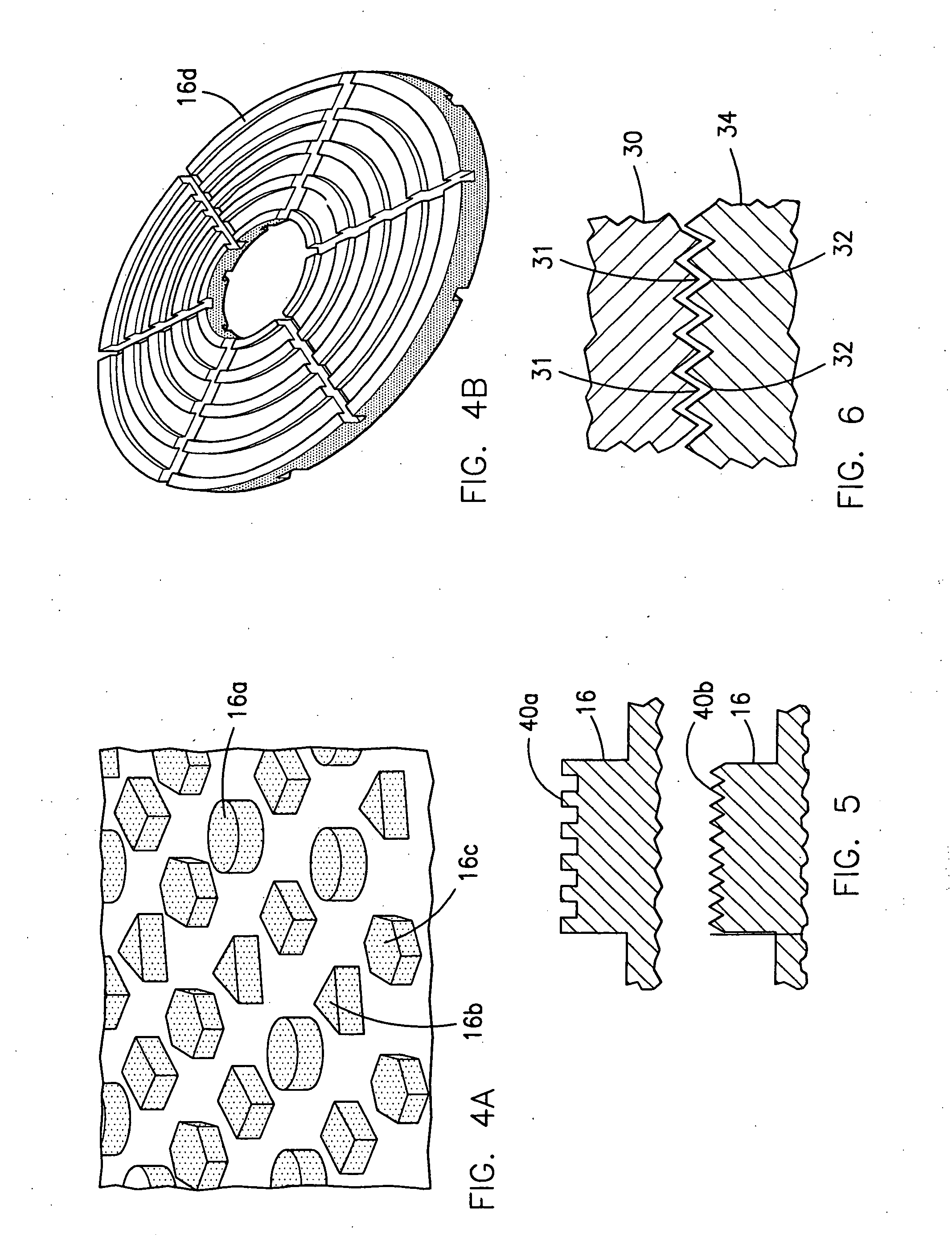Superhard cutters and associated methods
a cutter and super-hard technology, applied in the direction of grinding devices, lapping machines, other chemical processes, etc., can solve the problems of a large number of problems, the surface of silicon wafers may become chipped, and the conventional process is relatively expensive and not always effectiv
- Summary
- Abstract
- Description
- Claims
- Application Information
AI Technical Summary
Benefits of technology
Problems solved by technology
Method used
Image
Examples
example 1
[0079] A boron doped diamond film (“BDD”) having a resistivity of about 0.001 ohm-cm and a thickness of about 500 μm has a “zigzag” pattern formed on one edge via a wire EDM process. The resulting blade is mounted on an EDM machine as a cathode. The anode is a flat PCD about 100 mm in diameter and about 2 mm in thickness. The diamond table used is about 500 μm in thickness. An electrically conducting fluid is used to carry the electricity between the two electrodes. During the EDM process, the PCD is gradually traversed across the stationary BDD blade. This process is repeated while the BDD is gradually descending into the PCD compact. The portion of the PCD that is brought in close proximity to the edge of the BDD is selectively eroded away by electrical discharging, electrolysis, and dissolution.
[0080] In this manner, a corresponding “zigzag” pattern of ridges is gradually formed on the flat PCD top. When the grooves reach a predetermined height (e.g., 80 μm), the serrated ridges...
example 2
[0082] The above example was repeated with the reverse polarity: e.g., the BDD was positively biased. In this case, the EDM process was still viable except that the wear rate of the BDD was more than doubled. However, the surface finish of the ADD improved due to a slower erosion rate on the surface.
example 3
[0083] The process of Example 1 was repeated except that the cathode was replaced by a PCD blank of 1.6 mm in thickness (PCD table 0.5 mm thick, cemented tungsten carbide 1.5 mm thick). The PCD used had a 25 μm diamond grain size, it contained 10 wt % of cobalt and had an electrical resistivity of 0.001 ohm-cm.
PUM
 Login to View More
Login to View More Abstract
Description
Claims
Application Information
 Login to View More
Login to View More - R&D
- Intellectual Property
- Life Sciences
- Materials
- Tech Scout
- Unparalleled Data Quality
- Higher Quality Content
- 60% Fewer Hallucinations
Browse by: Latest US Patents, China's latest patents, Technical Efficacy Thesaurus, Application Domain, Technology Topic, Popular Technical Reports.
© 2025 PatSnap. All rights reserved.Legal|Privacy policy|Modern Slavery Act Transparency Statement|Sitemap|About US| Contact US: help@patsnap.com



